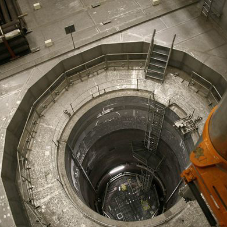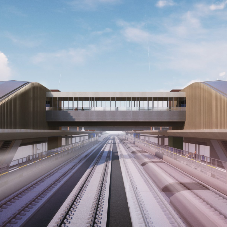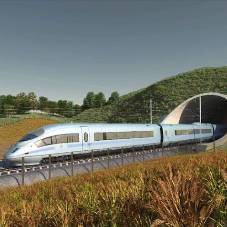A study by Kenneth J. Button focusing on High-Speed Rail (HSR) networks across China, Japan and Spain has shown that the introduction of a HSR network does not necessarily lead to the progression of economic equality across all the regions served. Bringing into doubt promises that HS2 will increase regional equality across the UK.
The study looked at the three largest HSR networks in the world: China, Spain, and Japan, focusing primarily on two things:
1. The profitability and efficiency of HSR networks in these countries
2. The effects had on regions served by HSR networks.
In the cases of both China and Japan, the study observed that HSR networks had increased the centralisation of their economies. In Japan specifically, HSR has led to an influx of workers commuting into Tokyo. However, the number of commuters travelling from Tokyo and Osaka (the two central hubs served by the Shinkansen) to outer regions is significantly smaller. Feeding into fears that HS2 will simply serve to feed more workers into London.
This is also reflected in China, which also demonstrated a trend of HSR increasing levels of centralisation around large economic hubs. While in Spain, there has been greater economic growth, though this is because of large scale government investment into other projects around HSR connected areas.
The findings of this study suggest that calling HS2 ‘the most important economic regeneration project in decades’ (as stated on the official website) may be somewhat of an overstatement.
Another point made by the study is that HSR doesn’t tend to attract many passengers who were not already using rail links. In 2011, a study across the European Union found that HSR had increased the usage of rail travel by only 6.4%. It is worth noting that the usership of a HSR needs to be incredibly high for it to be profitable.
What this means is the likelihood that HS2 will reduce road traffic and therefore reduce the UK’s carbon emissions is low. HS2 is probably not going to take many cars off the road, if any.
Considering the relative size and density of each country, Japan’s Shinkansen is the easiest HSR to compare HS2 against.
Japan’s Shinkansen is profitable, as it carries over 20 billion passengers each year. In 2018, Japan recorded 25.26 billion railway passengers whilst the UK lagged significantly behind at 3.2 billion. In a country where rail travel is already the primary mode of transportation, HSR makes a lot of sense. In the UK, rail is used by roughly 10% of commuters (figures taken from official government reports in 2018).
While Japan does have far greater regional equality than the UK, which is sometimes referred to as the most centralised nation in the developed world, it would be simplistic to credit this to the rail transport links.
Japan’s regional equality is a result of conscious government policy and its method of redistributing government funding. In fact, Kohei Suzuki, an assistant professor at The Institute of Public Administration in Leiden University argues that this is more related to how Japan views inequality as a regional divide rather than an ethnic divide, as a result of the countries demographics.
Japan’s non-native population is estimated to be at around 1% of the population. This has shaped policy in a way that reduces regional inequality. The UK is simply not governed this way.
In 2013 John Tomaney, Professor of Urban and Regional Planning at University College London, stated in an address to the Parliamentary Committee on HS2:
“Following our review of the international peer-reviewed and other literature, there are compelling reasons to doubt whether HSR will contribute to ‘rebalancing regional economies”
His own conclusions were that probable net economic benefits, would most likely flow to London and the South. Tomaney suggested that the development of better regional transport systems would be more likely to contribute to growth in the North.
Related Blog Articles













